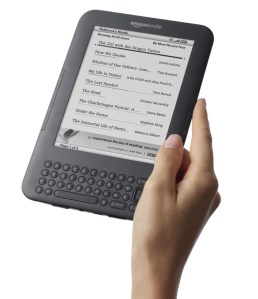
Four years after introducing its Kindle ereader, Amazon is crowing the platform’s success with another milestone: customers are now buying more titles for the Kindle than hardback and paperback books combined. Amazon says it sold 105 Kindle books for every 100 print books in any format since April 1, including print books for which no electronic version is available. Overall, Amazon says the success of the Kindle have resulted in the fasted year-on-year growth rate for Amazon’s U.S. books business in over 10 years.
“We had high hopes that this would happen eventually, but we never imagined it would happen this quickly—we’ve been selling print books for 15 years and Kindle books for less than four years,” said Amazon.com founder and CEO Jeff Bezos, in a statement. “We’re grateful to our customers for continuing to make Kindle the bestselling e-reader in the world and the Kindle Store the most popular e-bookstore in the world.”
Amazon still isn’t saying exactly how many Kindles or Kindle books it sells, but it does claim to have sold three times as many kindle books so far in 2011 as it did during the same period a year ago. The company is emphasizing that its new Kindle with Special Offers version of the device—priced at $114—has become the best-selling member of the Kindle device family in just five weeks of availability. Amazon also noted its UK bookstore is on pace to be selling more Kindle titles than printed titles soon: since April 1, Amazon’s UK customers have been buying more than two Kindle books for every single hardback book sold.


